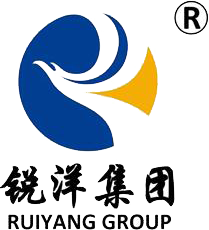
Conquering the Extremes: A Guide to Selecting Cable Accessories for Arctic, Desert, and Coastal Environments
2025-10-21 15:59The global expansion of power infrastructure into the world's most challenging landscapes places unprecedented demands on electrical components. Nowhere is this more critical than in the selection of cable accessories—the terminations, joints, and splices that form the vulnerable nodes of any cable system. Choosing the wrong accessory for extreme environments can lead to premature failure, costly downtime, and serious safety hazards. This article explores the key considerations for selecting robust cable accessories designed to thrive in the planet's harshest conditions: the freezing arctic, the scorching desert, and the corrosive salt-spray coast.
The Arctic Challenge: Defying the Deep Freeze
In arctic and high-altitude regions, temperatures can plummet to -50°C or lower. This intense cold makes standard polymer materials brittle, compromising their sealing and insulating properties. The primary enemy here is loss of elasticity.
Solution: Arctic-Grade Accessories
1. Material Science: Specify accessories made from special compound silicone rubbers or EPDM designed to retain flexibility at extremely low temperatures. These materials have a glass transition temperature far below the operational minimum.
2. Technology Choice: Cold-shrink technology is often preferred. Its inherent elasticity and factory-controlled installation prevent the risks associated with trying to apply heat for shrinking in freezing conditions.
3. Sealing Integrity: Ensure the sealants and mastics used are rated for low-temperature application and adhesion.
The Desert Trial: Enduring Sun and Sand
Desert environments present a dual assault: extreme heat and pervasive, abrasive sand. Continuous exposure to UV radiation and temperatures exceeding 60°C degrades most organic materials, while fine sand infiltrates the smallest openings.
Solution: Desert-Resistant Accessories
1. UV and Ozone Resistance: Silicone rubber is again the champion due to its exceptional resistance to UV degradation and ozone. Avoid standard materials that will crack and become brittle under the relentless sun.
2. Thermal Stability: Look for accessories with a high continuous operating temperature (e.g., +90°C to +110°C). Heat-shrink accessories used here must be made from specially stabilized, high-temperature polyolefins.
3. Abrasion Resistance & Sealing: A robust, abrasion-resistant outer jacket is crucial. Accessories must have multiple, high-integrity seals (e.g., multi-layer gel, self-amalgamating tape) to prevent fine sand from penetrating and tracking electrical paths.
The Coastal Onslaught: Fighting Salt Corrosion
In coastal and offshore areas, the constant presence of salt-laden moisture creates a highly corrosive and conductive atmosphere. This leads to rapid corrosion of metal components and tracking currents on insulating surfaces.
Solution: Corrosion-Fighting Accessories
1. Corrosion-Resistant Materials: All metal components (connectors, earth plates, shells) must be made from stainless steel or hot-dip galvanized steel with appropriate coatings.
2. Hydrophobicity: Silicone rubber excels here as well. Its hydrophobic (water-repellent) surface property prevents the formation of a continuous water film, thereby suppressing leakage currents and preventing flashover.
3. Sealed for Life: Pre-molded, one-piece designs that are hermetically sealed from the factory are ideal. For other types, ensure waterproofing to IP68 standards. An added internal layer of moisture-proof sealant provides an extra barrier against saltwater ingress.
The Universal Principle: Adaptation and Certification
The common thread across all these environments is the move away from standard, one-size-fits-all solutions. The key is to select accessories that are specifically engineered and certified for the target environment. Always look for:
Relevant Test Standards: Compliance with international standards (e.g., IEC, IEEE) that include tests for UV resistance, thermal cycling, salt-fog corrosion, and low-temperature flexibility.
Proven Track Record: Preference for products with a documented history of performance in similar extreme applications.
By understanding the unique threats posed by each environment and selecting cable accessories with the corresponding material and design properties, engineers can build power networks that are not only functional but also resilient and long-lasting, even at the ends of the Earth.
